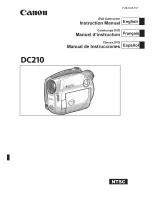
1
Chapter 4: Reference
How to handle data recorded on SD Memory Card
AVCHD Mode:
Data recorded in AVCHD format offers excellent
compatibility with computers due to the file type,
but since this format includes not only video
and audio data, but also a variety of important
information, the folder structure will consist of file
associations as illustrated in the diagram on the
right. If even part of this information is modified or
deleted, the data may no longer be recognized as
AVCHD data, or the memory card may not longer
be able to be used with AVCHD devices.
To prevent the loss of any part of the information
when transferring data on the SD Memory Card
to a computer or when copying data stored on
a computer back onto the SD Memory Card, be
sure to use the dedicated AVCCAM Viewer.
The AVCCAM Viewer can be downloaded from
the following website.
Both a Windows version and a Mac version are
available.
(Compatible OS: Windows XP/Windows Vista/
Windows7/Mac OS X 10.6 (Snow Leopard), 10.5
(Leopard), 10.4 (Tiger))
http://pro-av.panasonic.net/
AVCHD format video data files ([00000.MTS]
etc.) are saved in the [BDMV] folder.
Video thumbnails are saved in the [AVCHDTN]
folder.
JPEG format photos ([IMGA0001.JPG] etc.) are
saved in the [100CDPFP] folder. Up to 999 files
can be saved in each folder.
Photo data can be opened with picture software
that supports JPEG pictures.
The DPOF setting files are recorded in the
[MISC] folder.
•
•
•
•
•
Drive: \
CAMERA mode
PRIVATE
AVCHD
AVCHDTN
BDMV
CLIPINF
PLAYLIST
STREAM
PHOTO mode
DCIM
100CDPFP
MISC
DV mode:
DV format video and audio data files ([00000.AVI]
etc.) are saved in the [VIDEO] folder.
Video thumbnails are saved in the [ICON] folder.
PCM data needed to play back audio on this
camera are recorded in the [AUDIO] folder.
•
•
•
Drive: \
CAMERA mode
PRIVATE
MEIGROUP
SBGDVSD
VIDEO
ETC
AUDIO
CLIP
ICON





































